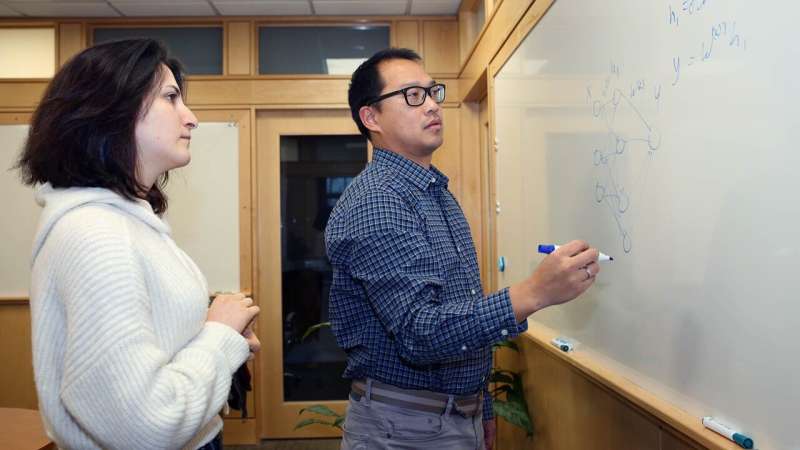
Artificial intelligence (AI) learning machines can be trained to solve problems and puzzles on their own instead of using rules that we made for them. But often, researchers do not know what rules the machines make for themselves. Cold Spring Harbor Laboratory (CSHL) Assistant Professor Peter Koo developed a new method that quizzes a machine-learning program to figure out what rules it learned on its own and if they are the right ones.
Computer scientists “train” an AI machine to make predictions by presenting it with a set of data. The machine extracts a series of rules and operations—a model—based on information it encountered during its training. Koo says:
“If you learn general rules about the math instead of memorizing the equations, you know how to solve those equations. So rather than just memorizing those equations, we hope that these models are learning to solve it and now we can give it any equation and it will solve it.”
Koo developed a type of AI called a deep neural network (DNN) to look for patterns in RNA strands that increase the ability of a protein to bind to them. Koo trained his DNN, called Residual Bind (RB), with thousands of RNA sequences matched to protein binding scores, and RB became good at predicting scores for new RNA sequences. But Koo did not know whether the machine was focusing on a short sequence of RNA letters—a motif—that humans might expect, or some other secondary characteristic of the RNA strands that they might not.
Koo and his team developed a new method, called Global Importance Analysis, to test what rules RB generated to make its predictions. He presented the trained network with a carefully designed set of synthetic RNA sequences containing different combinations of motifs and features that the scientists thought might influence RB’s assessments.
They discovered the network considered more than just the spelling of a short motif. It factored in how the RNA strand might fold over and bind to itself, how close one motif is to another, and other features.
Koo hopes to test some key results in a laboratory. But rather than test every prediction in that lab, Koo’s new method acts like a virtual lab. Researchers can design and test millions of different variables computationally, far more than humans could test in a real-world lab.
“Biology is super anecdotal. You can find a sequence, you can find a pattern but you don’t know ‘Is that pattern really important?’ You have to do these interventional experiments. In this case, all my experiments are all done by just asking the neural network.”
The team published their new methods and tools in PLOS Computational Biology. Their tools are now available to everyone online.
AI researchers ask: What’s going on inside the black box?
Citation:
Making AI algorithms show their work (2021, May 13)
retrieved 13 May 2021
from https://techxplore.com/news/2021-05-ai-algorithms.html
This document is subject to copyright. Apart from any fair dealing for the purpose of private study or research, no
part may be reproduced without the written permission. The content is provided for information purposes only.
Stay connected with us on social media platform for instant update click here to join our Twitter, & Facebook
We are now on Telegram. Click here to join our channel (@TechiUpdate) and stay updated with the latest Technology headlines.
For all the latest Technology News Click Here
For the latest news and updates, follow us on Google News.
